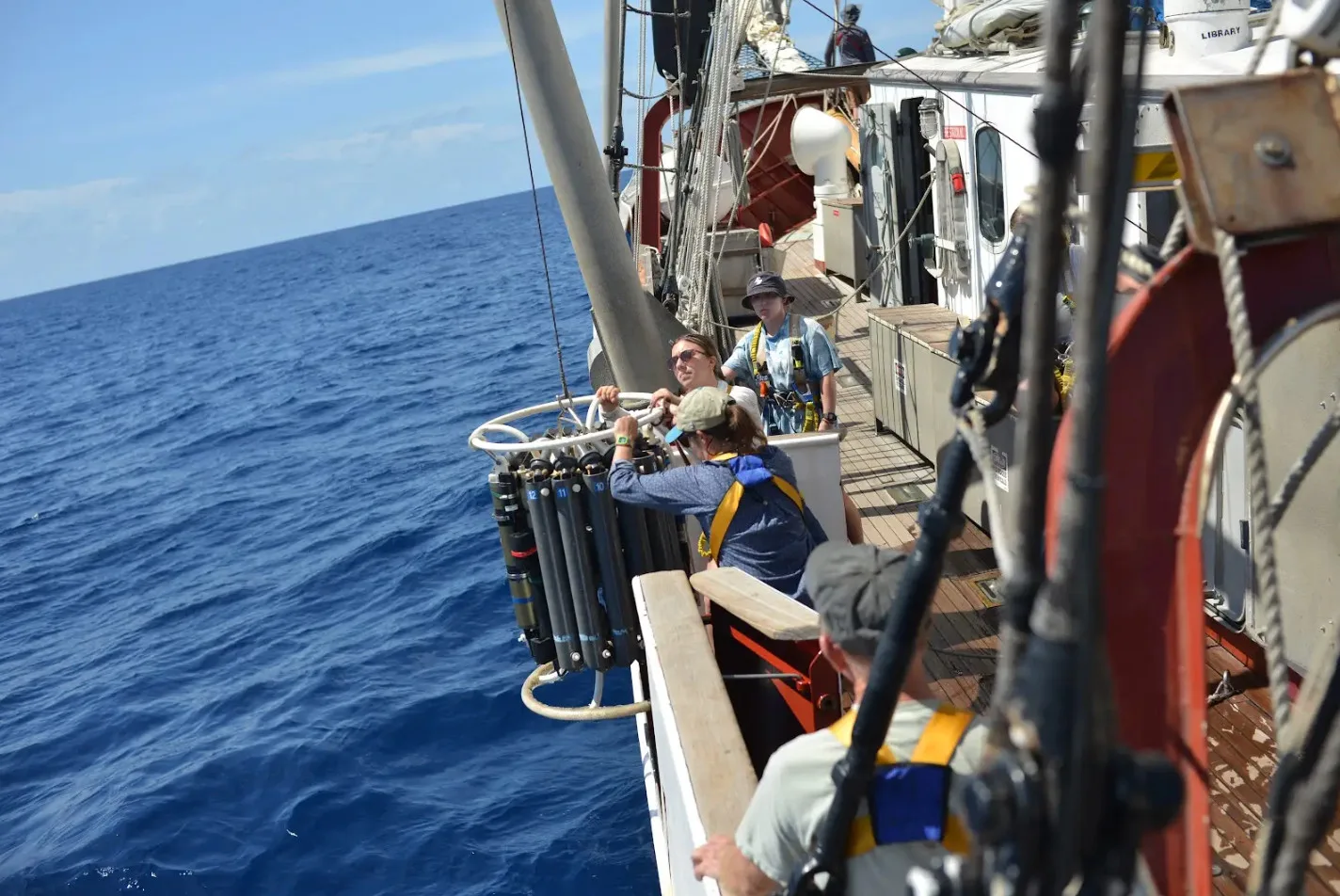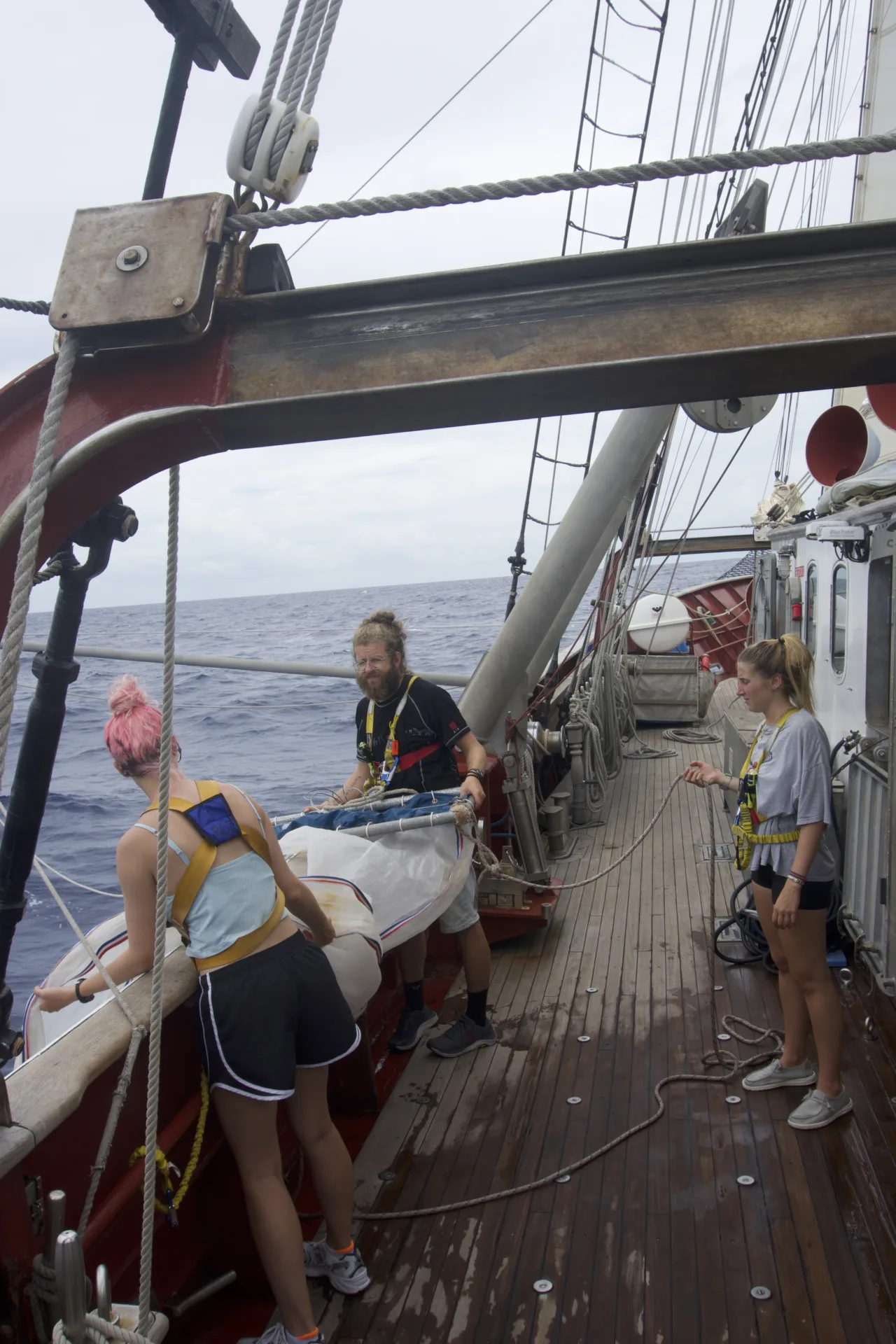Programs Blog
Territorial Seas and Marine Protected Areas

Monday, October 21, 2024
Location: Sailing through the 12th degree of south latitude
Hello, this is Quinn Bausch here to write some words about EEZs. EEZs (Exclusive Economic Zones) are essentially the marine territorial claims of nations.
They exist primarily to enshrine the rights of coastal communities to their own waters. If I lived by the beach and somebody just showed up outside my home and started taking all my fish, I’d be pretty upset too. We’ve passed through a couple of EEZs so far on our voyage. As I’m writing, we have entered a French EEZ associated with a small island somewhere outside our perception. EEZs usually have a range of about 200 nautical miles offshore in every direction. Exact overlap and boundaries are often subject to change due to disputes. The protection of offshore resources is generally taken very seriously as poor marine health has the potential to cause major disruption in coastal communities. Vessels must acquire permits for any operations they wish to conduct inside a country’s EEZ. We do not have any such permits for the French EEZ that we are currently crossing, so we can’t conduct any scientific deployments or other data gathering, simply because we don’t have the rights to. We were stuck in Fiji longer than planned due to some issues with customs and permits.
MPAs (marine protected areas) are different things entirely. To my knowledge, MPAs are distinct areas of open ocean where fishing activity is heavily limited. I’m not sure if we were passing over any during the voyage. Oftentimes MPAs will be established over areas of important productivity such as at-risk reefs or habitats of at-risk species. Punishments for violating MPA rules can vary pretty heavily depending on the nation that enforces them. Our vessel is not fishing on a large scale. We did catch a barracuda with a hand line the other day. Just as I was first finishing up this post Avery caught another fish on the line. It hasn’t been ID’d yet. Any location that we deploy our science equipment is deep enough that 600 meters of wire barely reaches down to depth. Conducting science in an MPA without proper authorization is more or less the same as in an EEZ: not cool. Just because the ocean is deep and vast, doesn’t excuse us of the obligation to do good science. We have to be mindful of the local environment to which we are visitors.

Recent Posts from the Ships
- Ocean Classroom 2024-A collaborative high school program with Proctor Academy
- Collaborations and Long-term Commitments: SEA’s Caribbean Reef Program Sets a Course for Coastal Programs that Compliment Shipboard Experiences.
- Sea Education Association students prepare for life underway using state of the art nautical simulation from Wartsila Corporation.
- SEA Writer 2022, Magazines From the Summer SEA Quest Students
- Technology@SEA: Upgrades Allow Insight into Ocean Depths
Programs
- Gap Year
- Ocean Exploration
- High School
- Science at SEA
- SEA Expedition
- SEAScape
- Pre-College
- Proctor Ocean Classroom
- Protecting the Phoenix Islands
- SPICE
- Stanford@SEA
- Undergraduate
- Climate and Society
- Climate Change and Coastal Resilience
- Coral Reef Conservation
- Marine Biodiversity and Conservation
- MBL
- Ocean Exploration: Plastics
- Ocean Policy: Marine Protected Areas
- Oceans and Climate
- Pacific Reef Expedition
- The Global Ocean: Hawai'i
- The Global Ocean: New Zealand